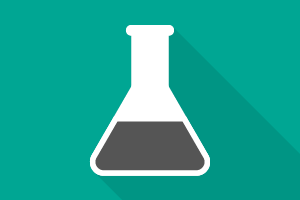Classroom Resources: Electrochemistry
Filter by:
1 – 25 of 67 Classroom Resources
-

Anode, Cathode | Middle School
Lesson Plan: What's in a Battery?
In this lesson, students will learn about the raw materials that are used to create batteries and the locations on Earth where they can be found. Students will also explore battery recycling options and brainstorm ways to reduce battery waste.
-

Redox Reaction, Oxidation, Reduction, Half Reactions, Cathode, Anode, Electron Transfer, Electrolysis, Electrolytic Cells, Error Analysis, Error Analysis, Accuracy, Chemical Change, Accuracy, Dimensional Analysis, Mole Concept, Significant Figures | High School
Lesson Plan: Recycling Copper from E-Waste
In this lesson, students will consider the need for innovative solutions to e-waste both from an environmental perspective as well as for the economic benefit to reclaiming raw materials from used electronic devices. They will then take on the role of an electroplate technician who is tasked with evaluating the effectiveness of a copper recycling process that uses electrolysis to purify and recover copper metal from e-waste. As e-waste is a relatively new—and growing—issue, it demonstrates how new industries can develop that utilize skills from existing jobs.
-

Atomic Spectra, Electrons, Redox Reaction, Gas Laws, Temperature, Volume, Pressure | High School
Lesson Plan: Fireworks Emergency Lesson
In this lesson, students will learn about electron structure, spectroscopy, gas laws, redox reactions, thermochemistry, and safety through reading the highly rated ChemMatters article, Fireworks! The lesson includes several activities to help promote literacy in the science classroom related to the reading. This lesson could be easily used as an emergency lesson plan for a substitute teacher, as most of the activities are self-guided.
-

Galvanic Cells, Redox Reaction, Oxidation, Reduction, Anode, Cathode, History | High School
Lesson Plan: Columbia Dry Cell Battery
In this lesson, students will learn about electrochemistry and electric cells (batteries) by reading an article and engaging in related activities. The activities help promote literacy in the science classroom. Parts of this lesson could be used as plans for a substitute teacher.
-

Titrations, Indicators, Accuracy, Dimensional Analysis, Error Analysis, Measurements, Significant Figures, Concentration, Redox Reaction, Reduction, Oxidation | High School
Lesson Plan: Vitamin C Quality Control
In this lesson, students will learn about a career in the skilled technical workforce, develop skills utilized in a quality control lab, and obtain data that may not have a clear “right answer.” For example, though many over-the-counter medications and vitamins state the amount of active ingredient, any individual tablet may have between 97 to 103% of the stated label claim. In addition, any products past the expiry date may have less due to potential decomposition. Students practice scientific communication by reporting their findings in a professional manner.
-

Redox Reaction, Oxidation, Reduction, Half Reactions, Reaction Rate, Reaction Rate | High School
Lab: Stop The Science: Redox Regulation
In this lab, students will investigate oxidation-reduction reactions while creating a complex picture using reactions of copper solutions on aluminum foil. Students will also apply previous knowledge of reaction rate to adjust concentrations, allowing for artistic expression such as shadowing and layering in their artwork.
-

Activity Series, Redox Reaction, Half Reactions, Oxidation, Reduction, Chemical Change, Predicting Products | High School
Lab: The Corrosion of Iron
In this lab, students will investigate the process of corrosion, a redox reaction, by analyzing how iron nails react in varied environments. Students will combine their prior knowledge with research about the reactivity of metals to make predictions in advance of the lab investigation.
-

Galvanic Cells, Half Reactions, Anode, Cathode, Reduction, Oxidation, Redox Reaction, Electron Transfer, Electrons, Electricity, Spontaneous Reactions , Spontaneous vs. Non-spontaneous Reactions, Electrolytic Cells | High School
Activity: Animation Activity: Galvanic Cells
In this activity, students will view an animation that explores how a galvanic cell works on a particulate level. Copper and zinc are the chemicals depicted in the spontaneous reaction. The transfer of electrons and involvement of the salt bridge are highlighted, in addition to the half reactions that take place for Zn (Zn → Zn2+ + 2 e-) and Cu (2 e- + Cu2+ → Cu).
-

Electron Transfer, Electrons, Electricity, Model of the Atom, Atoms, Subatomic Particles, Electrons, Observations | Middle School, High School
Lesson Plan: Understanding Static Electricity
In this lesson, students will complete a series of activities to explore how the imbalance of charges in materials creates static electricity and how those materials interact with others around them. They will describe the relationship between atomic structure, specifically the role of protons and electrons, and static electricity.
-

Reduction, Redox Reaction, Reduction Potentials, Galvanic Cells, Oxidation, Half Reactions, Cathode, Anode, Electron Transfer, Electrons, Concentration, Molarity, Net Ionic Equation, Nernst Equation | High School
Simulation: Galvanic/Voltaic Cells 2
In this simulation, students can create a variety of standard and non-standard condition galvanic/voltaic cells. Students will choose the metal and solution for each half cell, as well as the concentration of those solutions. They can build concentration cells and other non-standard cells, record the cell potential from the voltmeter, and observe the corresponding oxidation and reduction half reactions.
-

Galvanic Cells, Reduction Potentials, Redox Reaction, Half Reactions, Electrons, Electron Transfer, Anode, Cathode, Oxidation, Reduction, Concentration, Net Ionic Equation, Molarity, Nernst Equation | High School
Activity: Simulation Activity: Non-Standard Galvanic Cells
In this activity, students will use a simulation to create a variety of non-standard condition galvanic/voltaic cells. This simulation allows students to choose the metal and solution for each half cell, as well as the concentration of those solutions. Students will build concentration cells and other non-standard cells and record the cell potential from the voltmeter. They will compare the results of different data sets, write net ionic equations, and describe electron flow through a galvanic/voltaic cell from anode to cathode as well as the direction of migration of ions, anions towards the anode and cations towards the cathode.
-

Galvanic Cells, Reduction Potentials, Redox Reaction, Half Reactions, Cathode, Anode, Oxidation, Reduction, Electrons, Electron Transfer, Net Ionic Equation | High School
Activity: Simulation Activity: Galvanic/Voltaic Cells
In this activity, students will use a simulation to create a variety of galvanic/voltaic cells with different electrodes. They will record the cell potential from the voltmeter and will use their data to determine the reduction potential of each half reaction. Students will also identify anodes and cathodes, write half reaction equations and full chemical equations, and view what is happening in each half cell and the salt bridge on a molecular scale.
-

Galvanic Cells, Redox Reaction, Reduction Potentials, Half Reactions, Cathode, Anode, Oxidation, Reduction, Electrons, Electron Transfer, Net Ionic Equation | High School
Simulation: Galvanic/Voltaic Cells
In this simulation, students select different metals and aqueous solutions to build a galvanic/voltaic cell that generates electrical energy and observe the corresponding oxidation and reduction half reactions.
-

Review, Culminating Project, Mixtures, Separating Mixtures, Beer's Law, Concentration, Conductivity, Redox Reaction, Half Reactions, pH, Titrations, Buffers, Indicators, Ionic Bonding, Covalent Bonding, Alloys, Percent Composition, Le Châtelier's Principle, Enthalpy, Calorimetry | High School
Lesson Plan: AP Chemistry Experimental Evidence Review
In this lesson, students will evaluate data from 16 simulated lab experiments that were designed to mirror the Recommended Labs from the College Board. Corresponding lab experiments and demonstration options have also been included for teacher reference.
-

Activity Series, Balancing Equations, Predicting Products, Chemical Change, Chemical Change, Observations | High School
Lab: Activity Series of Unknown Metals
In this lab, students will create an activity series of metals from a series of reactions involving unknown metals. They will then compare their activity series and a list of metals used in this lab (supplied by the teacher after data collection) to a published activity series to identify the unknown metals.
-

Classification of Reactions, Redox Reaction, Activity Series, Oxidation, Reduction | High School
Lab: Investigating Oxidation-Reduction Reactions
In this lab, students will observe, classify and predict the products of single replacement, combination and decomposition reactions and provide a rationale for how reactions are classified using evidence from the lab and classroom.
-

Activity Series, Chemical Change, Electrons, Electron Transfer, Balancing Equations, Chemical Change, Predicting Products, Observations, Acid Base Reactions | High School
Simulation: Metals In Aqueous Solutions
In this activity, students will run simulated tests of various metals in aqueous solutions to determine the relative reactivity of these metals. A total of eight metals will be observed in various combinations with the corresponding metal nitrate solutions and hydrochloric acid. Students will interpret the data collected to construct an activity series of the elements used in this simulation.
-

Activity Series, Electrons, Electron Transfer, Balancing Equations, Predicting Products, Chemical Change, Chemical Change, Observations | High School
Activity: Simulation Activity: Metals in Aqueous Solutions
In this activity, students will run simulated tests of various metals in aqueous solutions to determine the relative reactivity of these metals. A total of eight metals will be observed in various combinations with the corresponding metal nitrate solutions and hydrochloric acid. Students will interpret the data collected to construct an activity series of the elements used in this simulation.
-

Predicting Products, Activity Series, Chemical Change, Chemical Change, Observations | High School
Project: Wastewater Recovery
In this project, students will analyze test results in order to design a procedure for recovering certain metals from wastewater using their knowledge of the Activity Series of Metals and single replacement reactions. Based on their analysis, students will create a proposal for presentation in an effort to recommend the best plan for reclaiming the metals from the wastewater.
-

Molecular Structure, Molecular Geometry, Polymers, Electronegativity, Heat, Temperature, Electricity | Middle School, High School
Activity: Future of Paint Video Questions
In this activity, students will watch a video and answer related questions about the fascinating and innovative scientific advancements of paint. During the video, Students will learn how the molecular components in paint are helping to evolve in the world around them.
-

Electricity, Anode, Cathode, Galvanic Cells, Redox Reaction, Renewable Energy | High School
Activity: Hybrid and Electric Cars Video Questions
In this activity, students will watch a video and answer related questions about the chemistry of batteries as they are used to power hybrid and electric cars. Students will learn about the basics of electricity, as well as how batteries function as a source of electricity.
-

Electricity, Anode, Cathode, Galvanic Cells, Heat, Renewable Energy | High School
Activity: Alternative Fuels Video Questions
In this activity, students will watch a video and answer related questions about the alternatives to petroleum-based fossil fuels such as biofuels and hydrogen fuel cells. Students will learn about the pros and cons of various fuel sources, as well as possibilities for the future of fuels.
-

Reduction, Oxidation, Redox Reaction, Catalysts, Activation Energy, Combustion | High School
Activity: Catalytic Converters Video Questions
In this activity, students will watch a video and answer related questions about the role of a catalytic converter and its corresponding chemical reactions within a vehicle. Students will learn about both oxidation and reduction reactions as well as the purpose of a catalyst.
-

Chemical Change, Activity Series, Redox Reaction, Chemical Change, Physical Change | High School
Demonstration: Understanding the Discrepant Reactivity of Copper in the Presence of Strong Acids
In this demonstration, students practice their observation skills during the additions of different acids to two test tubes containing copper. The activity is structured to allow students to make thoughtful remarks about what they observe, using rich indicators of both chemical and physical properties and changes. In subsequent lessons on new concepts, students can reflect back on their observations to rationalize the discrepant results of the reactions in the demonstration.
-

Classification of Reactions, Balancing Equations, Solubility Rules, Activity Series | High School
Simulation: Predicting Products
In this simulation, students will reference an activity series and a solubility chart to accurately predict the products of single replacement and double replacement chemical reactions. Associated particle diagrams will be displayed to help students better comprehend the reaction at the particulate level. Students will also be asked to balance the chemical equation. The simulation is designed as a five question quiz for students to use multiple times.